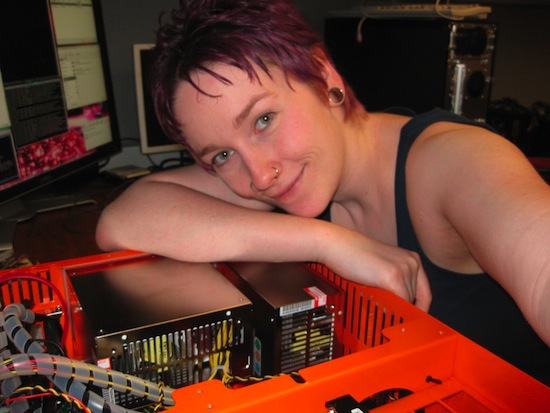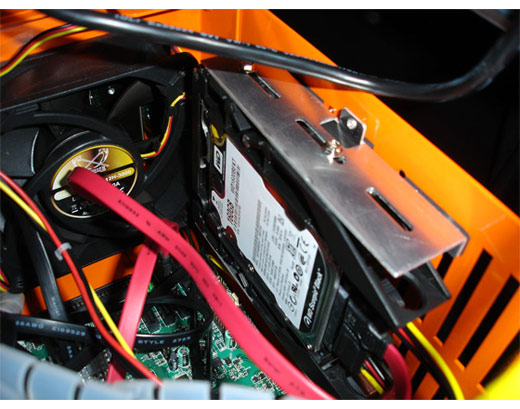
Okay, actually it was Chloe that built the first Pod. And Greg that built the second. But those Pods were built to store the geospatial information data for GINA—the Geographic Information Network of Alaska.
When searching for pics of Backblaze Storage Pods, I stumbled across Stefanie “Chloe” Edgar’s Picasa album with photos of the Storage Pod, and asked her why she needed boatloads of storage. Here’s her story:
The pod you stumbled upon in my Picasa album was one of two that I helped build for the Geographic Information Network of Alaska (GINA) in 2009/2010 when I was still a CS student. (I built the first pod, and finished up the build on the second, which was assembled by my colleague, Greg Wirth).
GINA is a small research group affiliated with the University of Alaska Fairbanks. We operate on grants mostly, so we have to be conservative and wise with our spending. That’s why my boss, Dayne Broderson, chose to use the open hardware that you so generously provide schematics to.
At GINA, we have many years worth of spatial and sattelite imagery, and we keep it all saved away for GIS specialists, cartographers, professors and students at the university to use. We also provide the majority of this data online through Web Mapping Services (WMS) on our website. It’s basically our own Google Earth, so millions of image tiles need to be stored. Given those circumstances, we needed something that would allow the data to be readily available for viewing. That’s where the pods came in.
Our pods are the first (that I’ve heard of, anyway) to be used as High Availability cluster nodes. That means if one pod goes down, the other pod takes over its IP and web services, without the users ever noticing. Since robustness is important to us at GINA, we also altered the design a little to allow for a RAID1 system partition. Otherwise, losing that one system disk could lead to unexpected downtime.
My colleague, Greg, made a mounting bracket that mounted something quite similar to this IcyDock inside our pods. It let us use two 2.5″ hard drives, which we then installed with RAID1 for the OS.
http://www.newegg.com/Product/Product.aspx?Item=N82E16817994087The only issue we ran into when building these was the PSU. The Modu 87 was cheaper and more readily available than the other PSU listed on your site, so we tried the Modu first. Here’s a picture of the problem we encountered:
(Update 7/28/14: Image link removed)From there, we tested it out with some molex adapters, which helped with the connector angle problem, but didn’t hold up under testing. (I let out the Magic Smoke! >_>)
We finally got our hands on the Plexton PSUs with the custom cabling, and everything from then on was smooth. It cleared up a lot of space inside the cases too, since the cabling was much neater.
It went so well, in fact, and has been running so reliably since, that my boss is considering implementing the V2 design next. I’m kind of jealous that I wont be there to help them build it this time, since I moved away recently to study more high-availability clustering at LINBIT. But that pod build was one of the most fun and interesting projects I’ve done yet!
Thanks for inquiring about our pods,
Best regards,
Stefanie “Chloe” Edgar
Congratulations Chloe, on building a high-availability cluster version!
And thank you for sharing the story!



